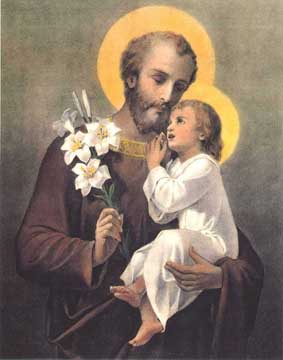Calming the Storm of Vatican II
The fact that Benedict chose to tackle this topic in one of his final addresses, when we are all paying attention, indicates the great importance of this issue.
In his 2005 Christmas address to the Roman Curia, Pope Benedict strikingly referenced St. Basil’s assessment of the post-Nicene Council period that described the Church as being in a naval battle in the darkness of a storm, where chaos made it impossible to discern the truth. Benedict was quick to say that things post-Vatican II were not quite so stormy, but he acknowledged there have been serious problems.
Shortly before resigning, in his remarks to the clergy of the Diocese of Rome, Benedict made another pointed statement. There were, he declared, two councils: "There was the Council of the Fathers — the true Council — but there was also the council of the media … and the world perceived the Council through … the media." For a while, the Pope noted, the media’s virtual council was stronger than the real Council. But now, 50 years after the start of the Council, the real one is prevailing.
These two significant papal speeches highlight that his task and that of his post-Vatican II predecessors (particularly Blessed John Paul II) has been to set the ship right so as to quiet the proverbial storm within which the Church has found herself.
When he addressed the Curia, Benedict identified two contrary hermeneutics, or interpretations, that have shaped the understandings of the Council. One is the hermeneutic of discontinuity and rupture that, he stated, "has frequently availed itself of the sympathies of the mass media."
An example of this would be the argument for women priests. In a secular context, where women are seen doing all the things men can do, it makes no sense to not have women priests; so proponents leave the context of Catholic teachings and turn instead to the sympathetic secular media that has no understanding of the Church’s rich Tradition. It’s not unlike a child who knows that the parent with all the facts is going to deny her request; so she goes to the parent who doesn’t have all the information, knowing that she’ll probably get what she wants.
Alternatively, there is the hermeneutic of reform and renewal in the continuity of the Church, which Benedict affirmed in his 2005 address by citing the words of Pope John XXIII at the opening of the Second Vatican Council in 1962: "‘The substance of the ancient doctrine of the deposit of faith is one thing, and the way in which it is presented is another ...’ retaining the same meaning and message."
Interestingly, people with very different views of the Church fall into the category of those who see the Council as a rupture with the past. On the one hand, there are those — such as the advocates of the ordination of women — who advanced a so-called "spirit" of Vatican II to allow everything and nothing at the same time. As Benedict explains, "[A] vast margin was left open for the question on how this spirit should subsequently be defined, and room was consequently made for every whim."
And then there are some traditionalist Catholics who hold that almost everything post-conciliar has been deficient and lacking in orthodoxy. Councils have always been an answer to a crisis, but to these traditionalists, apparently, some sort of a golden age existed just before Vatican II, and John XXIII called together the bishops for a Council not to discuss challenges, but to applaud each other for the successes of the Church around the world.
In 2005 and recently, Benedict made clear that the Council was convened to face difficult problems the Church needed to address. Broadly speaking, there was the question of how it should engage in the modern world. Benedict notes the Church at the time was not "robust," and "it seemed like a reality of the past and not the bearer of the future." There was also a clear tension in the pre-conciliar liturgy. He describes it as almost two parallel liturgies: the priest with the Missal and the altar servers and the laypeople with their prayer books.
The Council led with liturgical reforms, enhancing the mutual participation at Mass of the celebrant and the congregation, and then delved into specific temporal questions facing the Church. It subsequently delivered several foundational documents required to enable the Church to engage effectively with a world that had changed dramatically. But it would be decades before the dust began to settle. In the meantime, there would be plenty of casualties to conform with St. Basil’s image of a battle. Many of us were born post-Vatican II, but we all continue to live the Vatican II challenge in one way or another. In no way is the work of the Council complete, and much of the work up to now has been simply clarifying which Council is our source — the Council of the Fathers or the council of the media.
Ironically, the council of the media tends to portray John Paul II and Benedict as reactionary traditionalists. In fact, they have been the modernizing popes, constantly engaging the world in what Benedict calls "true reform," a "combination of continuity and discontinuity at different levels."
While his 2005 address was eminently clear, it did not get a lot of attention by Catholics or the secular media. The fact that Benedict chose to tackle this same topic in one of his final addresses, when we are all paying attention, indicates the great importance of this issue.
Pia de Solenni is a moral
theologian and cultural analyst. She resides in Seattle.
- Keywords:
- March 10-23, 2013














